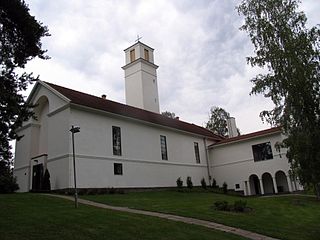
Muurame is a municipality of Finland, located 16 kilometres (10 mi) south-west of Jyväskylä. Muurame itself is located between two lakes, Lake Päijänne and Lake Muuratjärvi. These two lakes are connected to each other via River Muurame. All together there are 37 lakes in Muurame. Biggest lakes beside Päijänne are Muuratjärvi and Lake Kuusjärvi. River Muurame streams through the population center of Muurame. Muurame was founded in 1921.
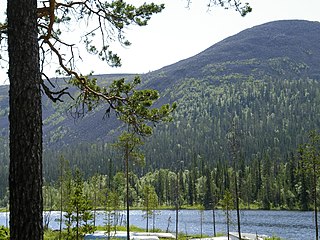
Kolari is a municipality of Finland at the Swedish border, which follows the Torne River, the longest free-flowing river in Europe.

Luopioinen is a former municipality of Finland, situated about 60 kilometres (40 mi) from Tampere. It is part of the Pirkanmaa region and in 2007 it was joined to the municipality of Pälkäne. It is a rural town containing a few lakes, most famous being lake Kukkia.

Kannonkoski is a municipality of Finland.

Kodisjoki is a village and a former municipality of Finland. At the time of the municipality's disestablishment, Kodisjoki was located in the province of Western Finland, now it is in the Satakunta region. Kodisjoki became part of the city of Rauma in 2007.

Kyyjärvi is a municipality of Finland. It is located in the Central Finland region, about 120 kilometres (75 mi) northwest of Jyväskylä. The municipality has a population of 1,175 and covers an area of 469.61 square kilometres (181.32 sq mi) of which 21.39 km2 (8.26 sq mi) is water. The population density is 2.62 inhabitants per square kilometre (6.8/sq mi). The municipality is unilingually Finnish.

Luhanka is a municipality of Finland. It is located in the Central Finland region. The municipality has a population of 691 and covers an area of 313.25 square kilometres (120.95 sq mi) of which 98.73 km2 (38.12 sq mi) is water. In relation to its population Luhanka is not just the smallest municipality in the region but also smallest in the whole Mainland Finland.

Sysmä is a municipality of Finland. It is situated in the Päijät-Häme region. The municipality has a population of 3,492 (30 September 2023) and covers an area of 936.18 square kilometres (361.46 sq mi) of which 269.14 km2 (103.92 sq mi) is water. The population density is 5.24 inhabitants per square kilometre (13.6/sq mi). Neighbouring municipalities are Asikkala, Hartola, Heinola, Kuhmoinen, Luhanka, and Padasjoki. The municipality is unilingually Finnish.

Taivassalo is a municipality of Finland, about 50 kilometres (31 mi) from the city of Turku. It is located in the Southwest Finland region. The municipality has a population of 1,691 and covers an area of 217.68 square kilometres (84.05 sq mi) of which 77.23 km2 (29.82 sq mi) is water. The population density is 12.05 inhabitants per square kilometre (31.2/sq mi).

Uurainen is a municipality of Finland.

Purmo is a former municipality of Finland. It was incorporated into the rural municipality of Pedersöre in Ostrobothnia in 1977. Purmo is home to a wooden church built by Antti Hakola in 1772. Approximately 1,400 people live in Purmo and like in Pedersöre, they are mainly Swedish-speaking.

Angelniemi is a former municipality of Finland. It became part of Halikko in 1967. It was located on partly on the continent by the Halikonlahti Bay and partly on Kimito Island and is still nowadays the only part of the island where Finnish is the primary language. Today the population of the area is 398, but it rises during the summer because of the summer cottages.

Ahlainen is a former municipality in the province of Satakunta, Finland. It was annexed with the city of Pori in 1972. Population of Ahlainen was 2,445 in 1971.
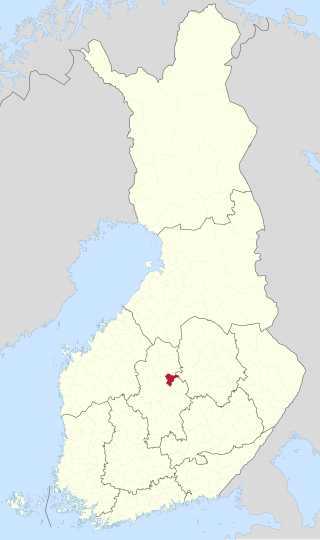
Konginkangas is a settlement and former municipality of Finland in the Central Finland region. It was consolidated with Äänekoski in 1993.

Pattijoki is a settlement and former municipality in Finland. It was a part of the Oulu Province, but now located in the region of Northern Ostrobothnia. It was consolidated with the town of Raahe in 2003.
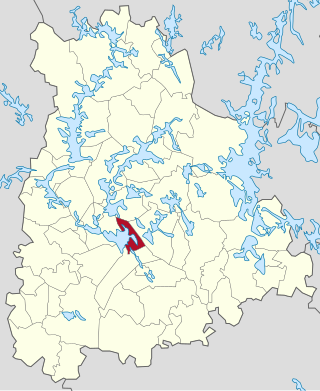
Tyrväntö is a former municipality of Finland in the Häme Province, now in Tavastia Proper. It was consolidated with Hattula in 1971. The northern part of the former municipality was transferred to Valkeakoski in 1978.

Moksi is a small village in Korpilahti, since 2009 a part of Jyväskylä. It is located in the Pohjois-Korpilahti statistical area along with Tikkala and Sarvenperä-Saukkola.

Suoniemi is a former municipality of Finland in the former Turku and Pori Province, nowadays in the Pirkanmaa region. It was consolidated with Nokia in 1973, which was located in the Häme Province at the time.
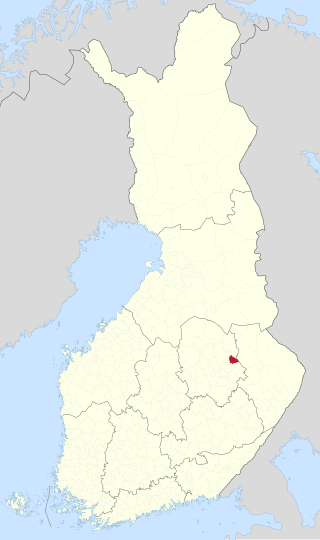
Säyneinen is a village and a former municipality of Finland at the time of its existence in the Kuopio Province, now in Northern Savonia. Together with Muuruvesi, it was consolidated with Juankoski in 1971, since 2017 part of Kuopio.
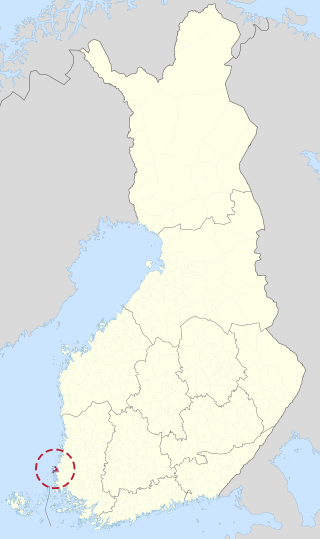
Pyhämaa is a village and a former municipality of Finland in the former Turku and Pori Province, now in the Finland Proper region. It was consolidated with the town of Uusikaupunki in 1974.





















